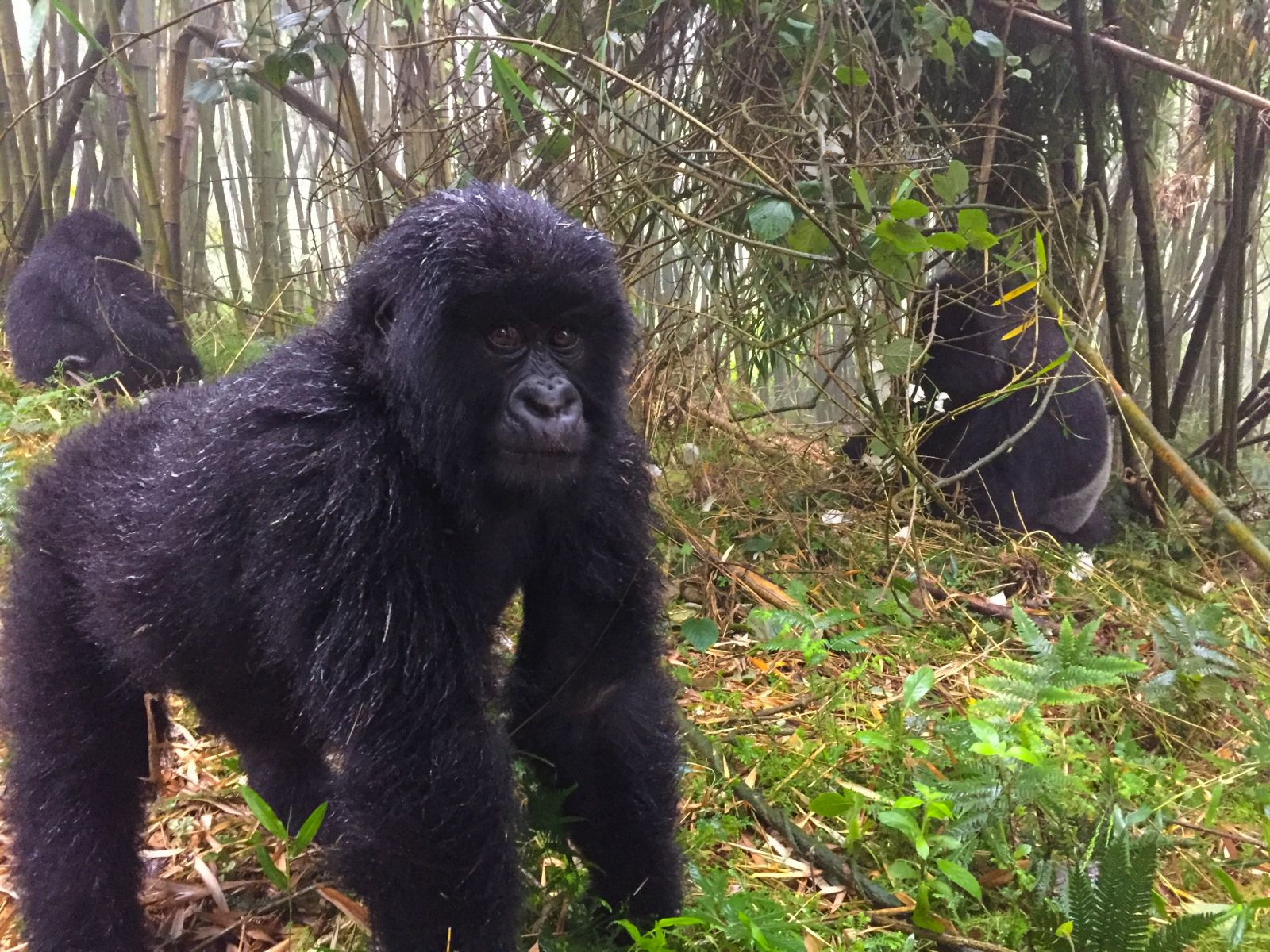 Have you ever seen a gorilla in a zoo? Most likely you have. They are pretty remarkable, aren’t they? I will tell you though, walking deep into a quiet forest and finding yourself mere meters from a family of critically endangered mountain gorillas…the feeling is unparalleled. When a silverback gorilla stares straight into your eyes, this is a result of decades of tireless work by many dedicated individuals. Allow me to tell you about my current practicum here at Gorilla Doctors, Rwanda and why this organization is so important.
Have you ever seen a gorilla in a zoo? Most likely you have. They are pretty remarkable, aren’t they? I will tell you though, walking deep into a quiet forest and finding yourself mere meters from a family of critically endangered mountain gorillas…the feeling is unparalleled. When a silverback gorilla stares straight into your eyes, this is a result of decades of tireless work by many dedicated individuals. Allow me to tell you about my current practicum here at Gorilla Doctors, Rwanda and why this organization is so important.
Gorilla Doctors is an organization dedicated to saving the mountain and eastern lowland gorillas that inhabit the national parks of Rwanda, Uganda, and the Democratic Republic of Congo. Many groups of mountain gorillas have been habituated within the forest in all three countries, and as a result they can be monitored very carefully and helped when needed, therefore benefitting from “extreme conservation” practices. When a gorilla falls ill, the Gorilla Doctors team enters the forest to perform the diagnostics and treatment indicated. But this alone is not enough. When every individual counts, you need to think bigger. And Gorilla Doctors does just that.
Their One Health approach, in combination with their veterinary interventions, may be responsible for the mountain gorillas being the only great ape species whose numbers are now growing in the wild. But these gorillas are still critically endangered. The local people, as well as their livestock, live directly adjacent to Volcanoes National Park inhabited by the gorillas. As you can imagine, humans and primates share many common infectious diseases.To keep the gorilla population in Rwanda healthy, we must also work to keep the locals healthy. And not only that, if we are asking local people in the village to respect the health and wellbeing of wildlife, we have a responsibility to help them keep their families healthy as well.
My main project at the Gorilla Doctors headquarters, working under the Docs4GreatApes organization, is to provide Continuing Professional Development (CPD) to nurses from the local village health centres. These nurses have a high school education only, and a need has been previously identified for CPD in ophthalmology, emergency cases, psychiatry, and obstetrics. Surveys were administered to nurses working at 14 health centres in the Volcanoes National Park area last year to determine the baseline knowledge level. This year, I am delivering an ophthalmology course to six nurses per week with assistance from a Rwandan interpreter. Fortunately for me, an eye is an eye and the anatomy and clinical case concepts are things I am already familiar with as a veterinarian. So teaching human ophthalmology at this level is not too different. At the end of each week, a similar survey to the previous year is given to the nurses again. Their results are compared to those from last year to see how their knowledge has improved as a result of the course. We are also adopting a “train the trainers” model, and I have trained a small group of nurses on how to deliver the course to their other colleagues. Some of them deliver the course better than I do, which is fantastic. Other work I do here consists of trips with our team to the forest to rescue injured monkeys, performing monkey and gorilla necropsies, and helping our vets in whatever needs doing. For the gorillas to survive, it means addressing conservation challenges from many angles. Thanks to Gorilla Doctors, Docs4GreatApes, and the many other organizations partnered and collaborating with them, the gorillas have a fighting chance. As someone with a longstanding passion for wildlife health, I am fortunate to be able to contribute to this incredible initiative.